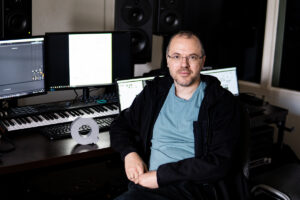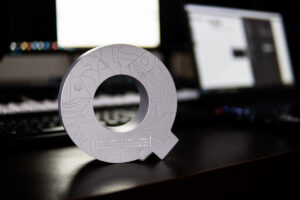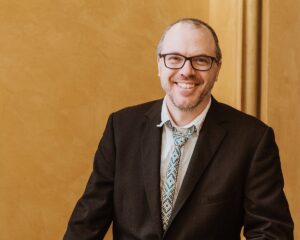Jonas Jurkūnas, a contemporary music composer and a lecturer at the KTU Faculty of Social Sciences, Arts and Humanities received an award for the best musical score in the animated Portuguese-Lithuanian film Garrano earlier this year. The Premios Quirino Awards, taking place in Tenerife, are celebrating the achievements of Ibero-American animation.
According to Jurkūnas, being local is meaningless in the current world – we are more and more connected due to technological advancements.
Working with different projects – from cinema and theatre to pure musical performance – he says that he likes the variety and possibilities of the musical technology field.
In the interview below, Jurkūnas talks about his career path and the peculiarities of his line of work.
What has brought you to film soundtrack composition?
Looking back, it seems like an invisible hand has guided me to where I am today, connecting all the right dots. On the other hand, there are quite a lot of coincidences and patterns on the artistic path.
My first music teacher, guitarist Stasys Daugirdas, was also my first creative teacher –he always encouraged me not only to improvise and jazz but also to compose. Gradually, more and more compositions appeared, and the field of composing expanded to include not only pure music and improvisation but also, occasionally, applied music projects, such as theatre and cinema.
I don’t have preferences for any particular field, all are equally important and interesting. I was lucky to work with my generation of animators, Rasa Joni and Vladislav Berežok. All the experience I have gained in both acoustic and electronic music is very useful when working with animation.
In the world of animation, sound technology allows you to fantasise and create the most unexpected tones and rhythms, completely detached from reality. After all, in that animation is unique – in a film, you can shoot the sunset, but in animation, everything, including the sunset, has to be created from scratch every time.
Music technology sounds like quite an exclusive specialty. Is it appealing to the generation of today?
Without any doubts. The current accessibility and operational efficiency of music technology encourages a focus on innovative creative solutions and experimentation. The current generation now has the best conditions to make even the craziest ideas a reality.
What are the career opportunities for music technologists in Lithuania and abroad?
If you had asked me this question a decade or two ago, I would have said that we still have room for improvement. Now, when I visit institutions abroad, I see that we are on the same level. We have access to exactly the same information and technology as in other countries. The same thing with career opportunities – here in Lithuania we have all the available conditions to fulfil our ambitions. All the more so because in the current era of technology, being local becomes meaningless.
Is creativity or technological competence more important in this career path?
It would be difficult to distinguish one or the other. I am convinced that nowadays creativity is hardly possible without certain technological competences. It would certainly be difficult for a contemporary composer to realise his/her ideas without the ability to work with DAWs, notation or graphic programming (e.g., Cycling74 Max), without knowing the basics of sound recording and mastering.
On the other hand, a technologically skilled composer needs to know not only the immediate context of the music he or she is composing, but also – dare I say it – the principles of Renaissance music, Romanticism, Jazz, African rhythms, Gamelan and the principles of composition. In general, a balance of competences is indeed necessary.
You are not only professional music composer, but also a KTU teacher. What made you choose the career of an educator?
I am grateful to fate for the opportunity to create the music I love and for the opportunity to share my experience. While teaching, one is constantly learning, discovering new ways to explore their artistic discipline through the educational aspect. Every time we work with students, we find new creative solutions to connect the ever-changing world of technology with creativity.
In this way, we discover something new and unique every time.





